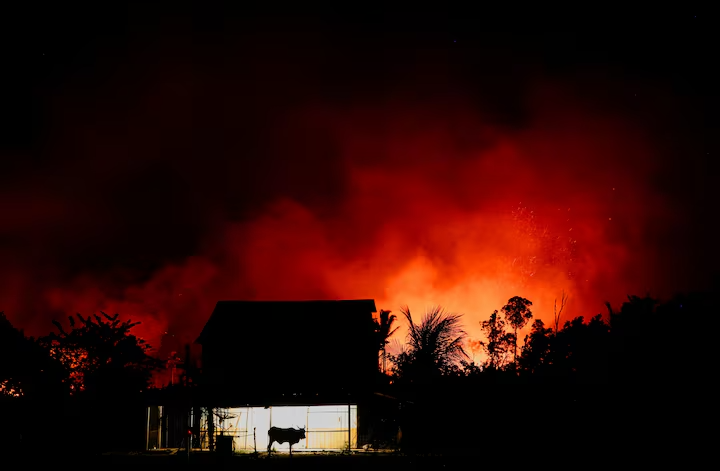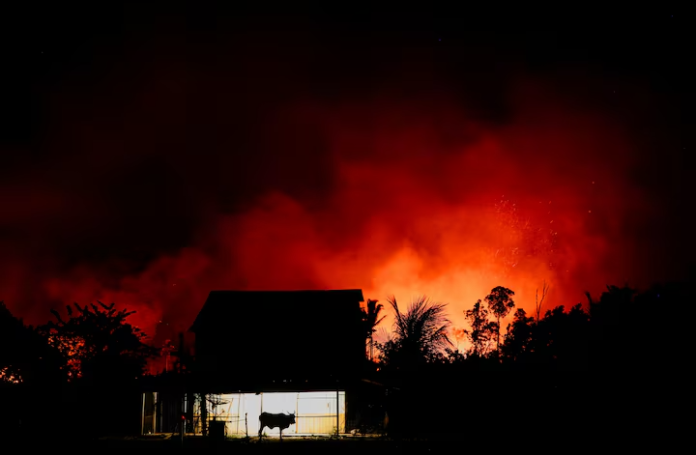In a disturbing turn for the planet, 2024 has set a grim record for forest loss across the globe—largely due to out-of-control fires in the Amazon rainforest. According to a new report by the World Resources Institute and the University of Maryland, tropical primary forest loss skyrocketed to 6.7 million hectares this year. That’s an 80% jump from 2023, wiping out an area nearly the size of Panama.
This alarming trend is being driven by climate change-induced droughts and fires, with Brazil—host of the upcoming UN climate summit—leading the devastation. The Amazon, often referred to as the “lungs of the Earth,” is burning more fiercely than ever before. Brazil alone lost 2.8 million hectares of forest, reversing the environmental progress made in 2023 when President Luiz Inácio Lula da Silva promised stronger protection for the rainforest.
“The data we’re seeing is terrifying,” said Matthew Hansen, co-director at the University of Maryland’s Global Land Analysis and Discovery (GLAD) lab. “There’s a real fear that climate change is moving faster than our ability to manage or respond.”
The Amazon’s unusually humid ecosystem is not naturally prone to fires, which makes this year’s surge even more unsettling. For the first time in the history of the WRI’s annual report, wildfires topped the list as the leading cause of tropical forest loss. And it wasn’t just Brazil that was hit hard.
Bolivia experienced a 200% increase in forest loss this year, fueled by agricultural expansion and extreme drought conditions. The South American nation now ranks second in the world for tropical forest destruction, overtaking the Democratic Republic of Congo—even though Bolivia has less than half the forest cover.
In other parts of Latin America—Mexico, Nicaragua, Guatemala, and Peru—similar patterns were observed. The root causes? A toxic mix of climate change, government-backed land clearing, and expanding agriculture.
Outside of the tropics, boreal forests in Canada and Russia also recorded massive losses, with both countries losing about 5.2 million hectares each due to wildfires that spiraled out of control.

However, there were a few bright spots. Southeast Asia saw progress, with countries like Indonesia, Laos, and Malaysia reporting significant reductions in primary forest loss. These improvements are attributed to strengthened conservation policies, corporate responsibility, and proactive community efforts.
One standout success story came from the Charagua Iyambae Indigenous territory in Bolivia. Through the use of early warning systems and sustainable land management practices, the community managed to prevent fire damage despite raging blazes across the nation.
Rod Taylor, WRI’s global director for forests, says it’s time for a paradigm shift. “We need new, effective funding models that make preserving forests more profitable than destroying them,” he noted. As global leaders prepare to gather in Brazil’s Amazonian city of Belém for the next climate summit, the urgency to act has never been clearer.
The message from 2024 is loud and clear: if we don’t address forest fires and climate change head-on, we risk losing the very ecosystems that keep our planet alive.



